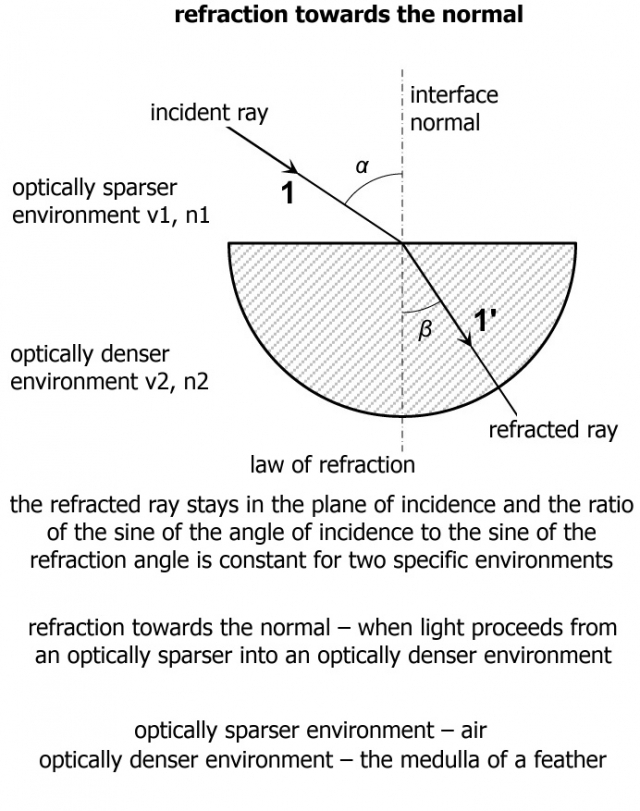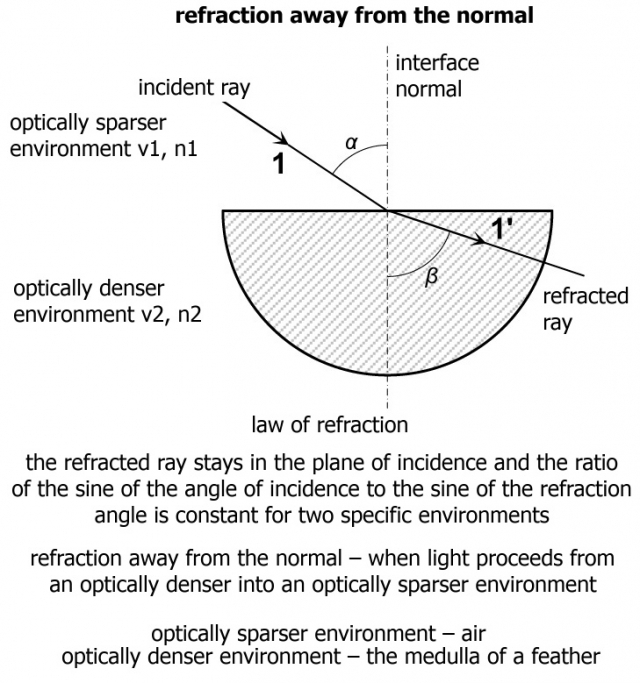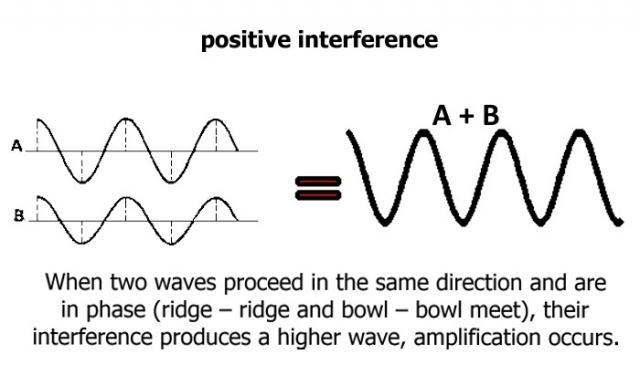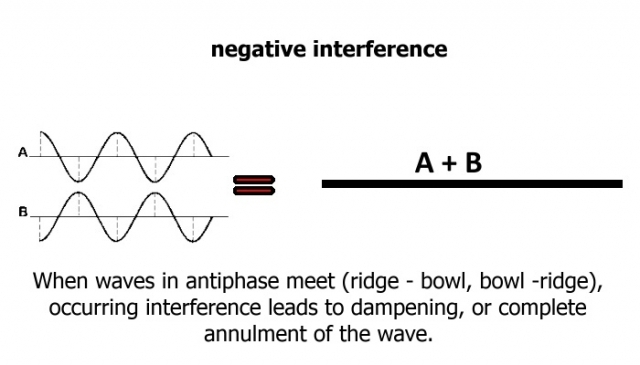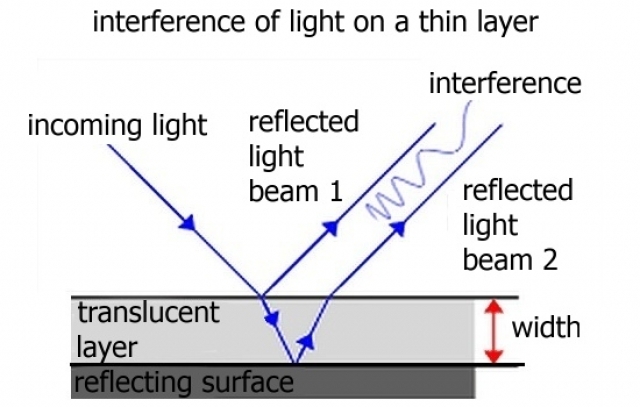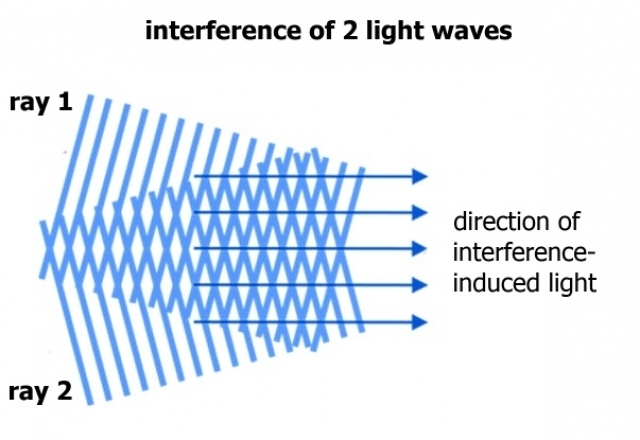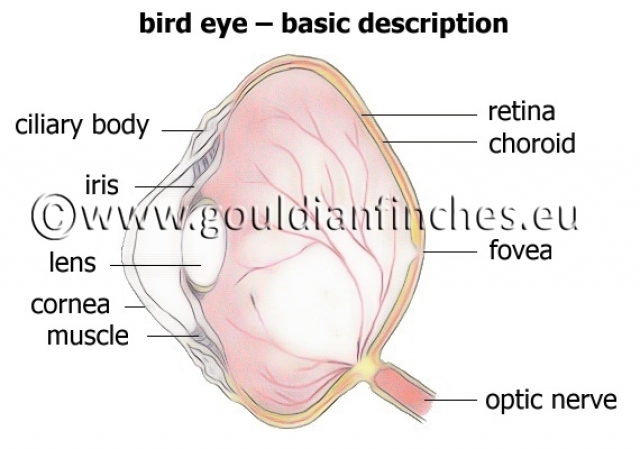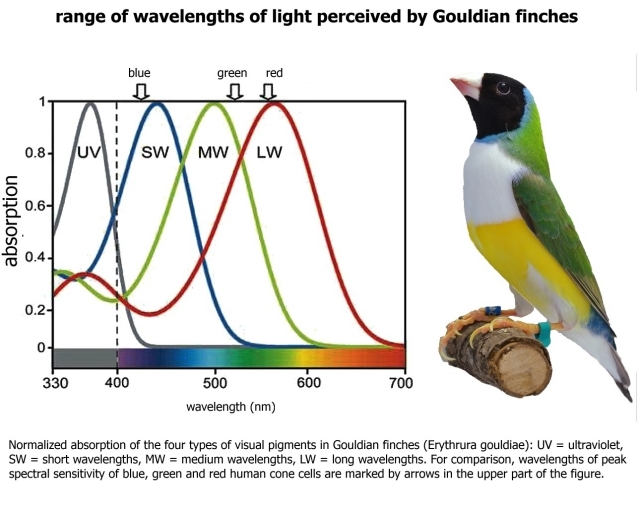Color and their perception
Introduction
 For a long time people did not understand how colors are formed. They thought that colors are created by the human eye, that they are not something permanent, inseparable from objects. The first one to shed some light onto the subject was the English scientist Sir Isaac Newton (1643 - 1727). In January 1666 he conducted an experiment: he let a ray of sunlight enter a dark room through a small opening, which produced a white light image on the opposing wall. The experiment continued by introducing a glass prism in the path of the light ray. The seven colors of the rainbow appeared on the wall: red, orange, yellow, green, blue, indigo and violet. Newton called them the spectrum, which is a Latin word for apparition, illusion (specter). Newton proceeded to use one additional prism following the first, but reversed and an “ordinary - white” ray of light appeared. Newton assumed that sunlight consists of the seven colors of the rainbow, so it may be decomposed and recomposed again, which he proved by his experiment. He concluded his speculations: Because the colors are a property of light, having its rays as their inner and immediate subject, we may also assume that the rays themselves are properties without the possibility of one property being the subject of another, contributing to it…. Thus if colors are properties of light, the creation and spreading of light are also related. To this Newton stated: It is not so simple to exactly determine what light is, how it is refracted and by what means, or what effects does the sensation of color have on our minds.
For a long time people did not understand how colors are formed. They thought that colors are created by the human eye, that they are not something permanent, inseparable from objects. The first one to shed some light onto the subject was the English scientist Sir Isaac Newton (1643 - 1727). In January 1666 he conducted an experiment: he let a ray of sunlight enter a dark room through a small opening, which produced a white light image on the opposing wall. The experiment continued by introducing a glass prism in the path of the light ray. The seven colors of the rainbow appeared on the wall: red, orange, yellow, green, blue, indigo and violet. Newton called them the spectrum, which is a Latin word for apparition, illusion (specter). Newton proceeded to use one additional prism following the first, but reversed and an “ordinary - white” ray of light appeared. Newton assumed that sunlight consists of the seven colors of the rainbow, so it may be decomposed and recomposed again, which he proved by his experiment. He concluded his speculations: Because the colors are a property of light, having its rays as their inner and immediate subject, we may also assume that the rays themselves are properties without the possibility of one property being the subject of another, contributing to it…. Thus if colors are properties of light, the creation and spreading of light are also related. To this Newton stated: It is not so simple to exactly determine what light is, how it is refracted and by what means, or what effects does the sensation of color have on our minds.
History of light and color
Even the Greek philosopher Aristotle (384 – 322 BC) believed that light is something transparent, spreading in the same manner waves do on the surface of water. He thus opposed the opinions of his predecessor Democritus (ca. 460 – 370 BC), who considered light to be a stream of particles, that every visible object projects. And so began the scientific dispute, whether light is a wave or stream of particles.
In 1690 the Dutch scientist Christiaan Huygens (1629 - 1695) published Treatise on Light, in which he states that light is a proceeding movement of sorts. It spreads from a light source in all directions in ethereal matter, which is an invisible and immeasurable substance filling all of space. Huygens assumed it is a longitudinal wave, similar to the sound waves in air. Newton, on the other hand, was a supporter of the corpuscular theory and in Opticks he wrote the assumption: light is something that is by different means propagated from glowing objects.
It was as late as 1801, when Englishman Thomas Young (1773 - 1829) made an ingenious experiment. He let candlelight pass through two narrow slits in an opaque obstacle. The screen showed light and dark lines, which Young attributed to interference of light wavefronts. The evidence was, however, considered insubstantial, and so 14 years later the same experiment was demonstrated by French engineer Augustin-Jean Fresnel (1788 - 1827), who also added a thorough mathematical explanation for the wave theory of light.
According to Fresnel, light spreads through ether in the form of waves, but not longitudinal (as Huygens proposed), but transverse. By this theory Fresnel could explain all the optic phenomena known by then.
 In the early 1960’s the Scotsman James Clark Maxwell (1831 - 1879) presented a new theory, the electromagnetic field theory. In his paper A Dynamical Theory of the Electromagnetic Field (1864) he reached the conclusion that light and magnetism are phenomena of the same basis, that light is a form of electromagnetic disturbance, which propagates through electromagnetic fields in accordance with the electromagnetic laws. This theory could explain all the optic phenomena (linear travel, reflection, refraction and diffraction, interference and dispersion), but it did not account for ether – the environment, through which the light travels. Not until 1887 did American physicist Albert Abraham Michelson (1852 - 1931) prove that nothing such as ether exists. With the aid of an interferometer he discovered that light travels at the same rate (ca. 300 000 km/h) in air and in vacuum. In 1899 German physicist Heinrich Hertz (1857 - 1894) experimentally proved Maxwell’s theory.
In the early 1960’s the Scotsman James Clark Maxwell (1831 - 1879) presented a new theory, the electromagnetic field theory. In his paper A Dynamical Theory of the Electromagnetic Field (1864) he reached the conclusion that light and magnetism are phenomena of the same basis, that light is a form of electromagnetic disturbance, which propagates through electromagnetic fields in accordance with the electromagnetic laws. This theory could explain all the optic phenomena (linear travel, reflection, refraction and diffraction, interference and dispersion), but it did not account for ether – the environment, through which the light travels. Not until 1887 did American physicist Albert Abraham Michelson (1852 - 1931) prove that nothing such as ether exists. With the aid of an interferometer he discovered that light travels at the same rate (ca. 300 000 km/h) in air and in vacuum. In 1899 German physicist Heinrich Hertz (1857 - 1894) experimentally proved Maxwell’s theory.
It was then clear that colors are simply electromagnetic waves of different wavelengths. Visible light wavelengths range from 390 (violet) to 790 (red) nanometers. Forms of electromagnetic radiation with wavelengths beyond red are infrared (790 - 300,000 nm), microwave and radio wave. Forms of radiation with shorter wavelengths than visible light are ultraviolet (390 - 10 nm), X-rays, gamma rays and cosmic radiation.
When attempting to prove the existence of electromagnetic waves Hertz came across an interesting fact. He found out that certain light beams may cause electrons in metals to be ejected. He noticed that this ability is specific for rays close to violet color, not the ones near the red side of the spectrum, he failed to provide an explanation, however. The explanation of the photoelectric effect came in 1905 from the German physicist Albert Einstein (1879 - 1955), who received a Nobel Prize in 1921 for it. For the explanation of the photoelectric effect Einstein required quantum theory knowledge, the basics of which were laid out by German scientist Max Karl Ernst Ludwig Planck (1858 - 1947). The theory states, that light is emitted and absorbed in quanta (photons), and it stems from the, by then rejected, corpuscular theory. The wave theory was not rendered obsolete however, as quantum theory could not explain interference of light, for example.
Scientist therefore agreed that the nature of light is both undulatory (wave-based) and corpuscular (particle-based). Some observations show it as a stream of photons, other as a wave.
How colors are created
 Even though Newton, with his prism experiment, demonstrated that light consists of the seven colors of the rainbow, it raised discussions as late as the early 19th century. His works were being studied by the French enlightenment philosopher Voltaire (1694 - 1778), who thought Newton to be “the mightiest man who ever lived, who rules over the spirits of men by the force of his truths”. But Newton also had an opponent in the person of the German writer Johann Wolfgang von Goethe (1749 - 1832). In 1810 he published his Theory of Colors, in which he recorded 20 years-worth of observations and experiments. However, the value of the book is rather artistic than scientific. According to Goethe, Newton’s experiments are special cases contradicting human experience. Goethe himself followed the idea that by simply observing the world around it was apparent how colors were created. He defined colors through his observations of snow shimmering and he reached the conclusion that color is related to shade, that it ‘likes’ to combine with it, appear in it…. And as he states elsewhere colors are daughters of light and shadow. The error on his part lies in the fact that colors in physics and colors perceived by human senses are not the same.
Even though Newton, with his prism experiment, demonstrated that light consists of the seven colors of the rainbow, it raised discussions as late as the early 19th century. His works were being studied by the French enlightenment philosopher Voltaire (1694 - 1778), who thought Newton to be “the mightiest man who ever lived, who rules over the spirits of men by the force of his truths”. But Newton also had an opponent in the person of the German writer Johann Wolfgang von Goethe (1749 - 1832). In 1810 he published his Theory of Colors, in which he recorded 20 years-worth of observations and experiments. However, the value of the book is rather artistic than scientific. According to Goethe, Newton’s experiments are special cases contradicting human experience. Goethe himself followed the idea that by simply observing the world around it was apparent how colors were created. He defined colors through his observations of snow shimmering and he reached the conclusion that color is related to shade, that it ‘likes’ to combine with it, appear in it…. And as he states elsewhere colors are daughters of light and shadow. The error on his part lies in the fact that colors in physics and colors perceived by human senses are not the same.
The three basic colors of the spectrum, with which all other colors can be made, are red, green and blue (blue-violet). On the other hand, a painter would name cyan (light blue), magenta (red) and yellow as irreplaceable colors. This is because white light is created with additive combination of basic colors (RGB). If we combine the basic color in pairs we get yellow, cyan and magenta, and combining all three we get white.
A painter’s color is not a color in the physical sense at all, it merely contains a pigment, which reflects, conveys or absorbs light of different wavelengths. The more light the surface of an object absorbs, the darker it seems. For example, the molecules in a lemon peel absorb most of the spectrum and reflect yellow rays, which is why we see it as yellow. Snow, on the other hand, reflects almost all light and seems white. Ashes however absorb most light and seem black. So pigments produce light in such a way that they absorb parts of the spectrum, which is why this kind of color combination is called subtractive. In this way yellow and cyan produce green, yellow and magenta produce red and cyan and magenta produce blue.
The color of an object does not only depend on which colors the surface is able to absorb or reflect, but also on the constitution of the light. For example a blue object only reflects blue light and absorbs all other rays, so a blue object might seem black under red light. Artificial light from bulbs makes it difficult to discern blue, violet and black, as it contains more red and yellow and less blue and violet tones as in sunlight.
Colors may appear via certain physical effects even where pigments are absent.

 Rainbow: As the raindrops have an aerodynamic shape, rays contact them under different angles 0° to 90°. Not all rays form the rainbow however. As far as a normal rainbow with a single (primary) arc goes, the rays of light contact the drop under a 60° angle. As the ray hits the surface of the drop, it refracts into the spectral colors, as different colors have different wavelengths (from UV to IR). During contact and refraction of the beam, some portion is reflected, i.e. the beam is split into one part which is reflected away from the drop and another part which is conveyed through the drop. Afterwards the band of colored rays reaches the far boundary of the drop (from the inside, every light wavelength individually) where, again, some portion escapes the drop and the rest comes to the final phase where they are reflected towards the observer under a 42° angle. Naturally not every ray contacts the drop at the same angle, and they fan out when exiting the drop. The result of this process is that we may observe an arc of colors ordered from red to purple on the rainy sky, a rainbow.
Rainbow: As the raindrops have an aerodynamic shape, rays contact them under different angles 0° to 90°. Not all rays form the rainbow however. As far as a normal rainbow with a single (primary) arc goes, the rays of light contact the drop under a 60° angle. As the ray hits the surface of the drop, it refracts into the spectral colors, as different colors have different wavelengths (from UV to IR). During contact and refraction of the beam, some portion is reflected, i.e. the beam is split into one part which is reflected away from the drop and another part which is conveyed through the drop. Afterwards the band of colored rays reaches the far boundary of the drop (from the inside, every light wavelength individually) where, again, some portion escapes the drop and the rest comes to the final phase where they are reflected towards the observer under a 42° angle. Naturally not every ray contacts the drop at the same angle, and they fan out when exiting the drop. The result of this process is that we may observe an arc of colors ordered from red to purple on the rainy sky, a rainbow.
 Sky: its color is more or less intensive blue. In reality the sky is black, which has been proved by astronauts. Why does the sky then appear to be light blue from the surface of the earth? The answer to this was given by Robert John Strutt, 4th Baron Rayleigh. He explained that the color of the sky depends on the dispersion of sunlight on the tiny particles in the atmosphere. Particles of air and/or water disperse mainly short wavelength rays, so the lowest ranges of the visible light spectrum (blue and violet). It means that the air produces more blue and violet color, which is why the sky seems blue. This only applies to particles of water and air, the dimensions of which are smaller than the wavelength of the light. Otherwise the same dispersion would happen for all the colors and the sky would seem gray or white. The color is determined by the number of particles in the air.
Sky: its color is more or less intensive blue. In reality the sky is black, which has been proved by astronauts. Why does the sky then appear to be light blue from the surface of the earth? The answer to this was given by Robert John Strutt, 4th Baron Rayleigh. He explained that the color of the sky depends on the dispersion of sunlight on the tiny particles in the atmosphere. Particles of air and/or water disperse mainly short wavelength rays, so the lowest ranges of the visible light spectrum (blue and violet). It means that the air produces more blue and violet color, which is why the sky seems blue. This only applies to particles of water and air, the dimensions of which are smaller than the wavelength of the light. Otherwise the same dispersion would happen for all the colors and the sky would seem gray or white. The color is determined by the number of particles in the air.
 Twilight: colors seen on the horizon at dusk or dawn. This effect is related to the dispersion of red and yellow rays in the atmosphere. That is why at dusk or dawn these colors are dominant. The colors seen at twilight are more intensively red with higher concentration of water vapor in the air. This means that if the atmosphere was completely clear and dry, there would be no colors visible at twilight. Also the intensity of colors depends on the saturation of the air with water particles. In lower geographic regions the colors at twilight are much more intensive than in mountainous regions. This is because plains are warmer, so more water evaporates into the air.
Twilight: colors seen on the horizon at dusk or dawn. This effect is related to the dispersion of red and yellow rays in the atmosphere. That is why at dusk or dawn these colors are dominant. The colors seen at twilight are more intensively red with higher concentration of water vapor in the air. This means that if the atmosphere was completely clear and dry, there would be no colors visible at twilight. Also the intensity of colors depends on the saturation of the air with water particles. In lower geographic regions the colors at twilight are much more intensive than in mountainous regions. This is because plains are warmer, so more water evaporates into the air.
Sea: the sea gains its color partially by reflecting the sky, but also due to the microscopic particles contained in seawater, which cause the dispersion of light. At the shore the sea often seems pale green, as sand grains disperse rays of greater wavelengths, seaweed also reflect red-brown color.
Color effects on CDs: On the thin layers effects caused by interference, the crossing of light waves, occur. Rainbow-like colors are also created on soap bubbles or oil stains. This effect is seen also in living nature. The iridescent colors of butterfly wings, hummingbirds and peacock feathers are also caused by scattering of light on small elliptic lamellas in the thin upper layer of plumage or wings.
Coloring of animals in the wild is also very interesting. Animals living in darkness or snowy lands often have no pigments at all. Sometimes the loss of pigment is caused by a flaw called hypochromia, in extreme cases albinism (also leucism). There are also flaws where one type of pigment is extremely high, called hyperchromia. For example specimens with xanthism (or lutino) express extreme levels of yellow pigmentation. The opposite of albinism is another example of such flaw called melanism, the excess of melanin. In the past hundred and fifty years cases of industrial melanism have been observed, when the pigmentation of animals adapts to new conditions caused by human activity. Such a case has been observed in Britain in the evolution of the pepper moth, which adapted to soot covered trees by changing its light speckled coloring to a black one.
Light
Theory of light
Visible light is the part of the electromagnetic spectrum with wavelength in vacuum between 380 nm (violet) and 780 nm (red). To be more precise this is the visible range for humans.
The basic concept behind color rendering index is the reflection of light (electromagnetic radiation) from different materials. Rays of different wavelengths reflect differently from observed objects. It means that we only observe a red object as red because it reflects rays of wavelengths corresponding to red color. However, if rays of the specific wavelength were missing from the radiation, we would not observe the color and see the object as gray (black).
Light refraction
Light waves normally proceed through space linearly. They may, however, change direction, when they meet an obstacle, or when they transit from one environment to a different one. Refraction of light occurs, when light passes through an optic interface, e.g. from air through feather structures. When light rays transit from one matter into another, with different densities, their phase velocity changes. The rays bend and are called refracted rays. The change in phase velocity depends on the density of the materials involved. The light gains phase speed as it enters a sparser matter and slows down in denser environments. When light travels from sparse environment into a denser one, light bends towards the normal. When it travels from a dense environment into a sparser one, it bends away from the normal.
Light interference
When light rays reflect or refract, their paths may cross and interference may occur. When light rays interfere with each other, some wavelengths add up, others subtract and in this way colors may appear, e.g. on the surface of feathers.
When reflecting from an interface between optically sparser and optically denser environment, the phase of the reflected wave is inverted, otherwise it is retained.
Inversion is the shift of the phase of a wave by a half-period and occurs when light is reflected from the interface between optically sparser and optically denser environments.
Constructive (additive, amplifying) interference occurs, when the rays are in phase.
Destructive (subtractive, dampening) interference occurs, when the rays are in antiphase.
Interference, wave interference or the interference effect is the sum (superposition) of several coherent waves of the same kind into one resulting wave.
In a flexible environment waves from different sources may exist at the same time. Resulting oscillations are a vector sum of individual partial waves. A wave spreading from one source propagates itself through space, as if no other waves existed in the same space. In the region, where the waves coincide, according to the superposition principle, the resulting wave is the sum of the individual waves. The offset of any one element of the environment will be equal to the vector sum of offsets, which the element would have gained from each of the individual waves. Amplification, dampening or even annulment may occur in each of the points. Such effects of wave interaction are collectively labeled as interference effects. Interference effects are only observed, when the interfering waves are coherent.
How humans perceive colors
Humans started to consider the mysteries of the human eye in relation to questions concerning light. Even ancient Greeks had good knowledge of the construction of the eye and even performed eye surgery. Despite this Pythagoreans imagined the process of vision as such, that rays emerge from the eye to sample objects. Atomists on the other hand assumed that radiant or lit objects produced some sort of imprints, which enter the eye.
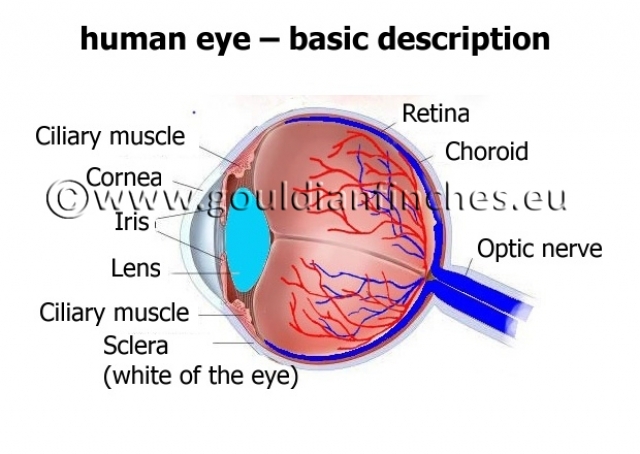 These theories, and their like, lasted until the 17th century, when a German Jesuit priest Christoph Scheiner (1575-1650) conducted a simple experiment. He used an eye of a freshly killed animal, he removed the surface layers and revealed the retina. He observed small, reversed images of objects in front of the eye. The fact that a living eye works in the same way was proven by the Czech scientist Jan Evangelista Purkyně (1787-1869), in 1823. Purkyně also described an experiment, when he observed a blue envelope with a red seal at sunset. While the red seal grew darker, the blue of the envelope became brighter, even though both lost color. This effect was named the Purkynje shift. It is easy to explain. The perception of colors is facilitated by two types of receptors – rods and cones, which lie in the photoreceptor layer, the next-to-last layer of the retina. Cones are responsible for color vision, while rods rather react to the intensity of light. By the means of rods, we see in twilight, when cones are no longer sensitive, however only in shades of gray. Rods do, however, react also to color, specifically the blue-green portion of the spectrum, while cones are more sensitive to the red-yellow part. An important discovery was also made by Thomas Young (1773-1829), who, besides the discoveries of lens accommodation and astigmatism (pathological asphericity of the cornea) development, concluded that the eye contains three kinds of receptors for perception of red, green and blue colors. His theory was later expanded by German physician and physicist Herman von Helmholz (1821-1894), who approved the three receptor hypothesis, though they are excited by all colors on a different level, leading to color perceptions. A slightly different theory was proposed by German physiologist Ewald Hering (1834-1918), who stated that only four basic colors exist: red, yellow, green and blue and only two types of receptors, which react to color pairs, red-green and yellow-blue. Later he added a third receptor for white and black. The American George Wald finally determined that three kinds of receptors exist, containing different pigments reacting to blue, green and red light.
These theories, and their like, lasted until the 17th century, when a German Jesuit priest Christoph Scheiner (1575-1650) conducted a simple experiment. He used an eye of a freshly killed animal, he removed the surface layers and revealed the retina. He observed small, reversed images of objects in front of the eye. The fact that a living eye works in the same way was proven by the Czech scientist Jan Evangelista Purkyně (1787-1869), in 1823. Purkyně also described an experiment, when he observed a blue envelope with a red seal at sunset. While the red seal grew darker, the blue of the envelope became brighter, even though both lost color. This effect was named the Purkynje shift. It is easy to explain. The perception of colors is facilitated by two types of receptors – rods and cones, which lie in the photoreceptor layer, the next-to-last layer of the retina. Cones are responsible for color vision, while rods rather react to the intensity of light. By the means of rods, we see in twilight, when cones are no longer sensitive, however only in shades of gray. Rods do, however, react also to color, specifically the blue-green portion of the spectrum, while cones are more sensitive to the red-yellow part. An important discovery was also made by Thomas Young (1773-1829), who, besides the discoveries of lens accommodation and astigmatism (pathological asphericity of the cornea) development, concluded that the eye contains three kinds of receptors for perception of red, green and blue colors. His theory was later expanded by German physician and physicist Herman von Helmholz (1821-1894), who approved the three receptor hypothesis, though they are excited by all colors on a different level, leading to color perceptions. A slightly different theory was proposed by German physiologist Ewald Hering (1834-1918), who stated that only four basic colors exist: red, yellow, green and blue and only two types of receptors, which react to color pairs, red-green and yellow-blue. Later he added a third receptor for white and black. The American George Wald finally determined that three kinds of receptors exist, containing different pigments reacting to blue, green and red light.
In reality, cones sensitive to one color also dampen the sensation for other types of cones. For example, red light excites cones sensitive to red and at the same time inhibits the sensation for green. Similarly, blue signals dampen the signals for red and green, which in combination give yellow – the negation of blue.
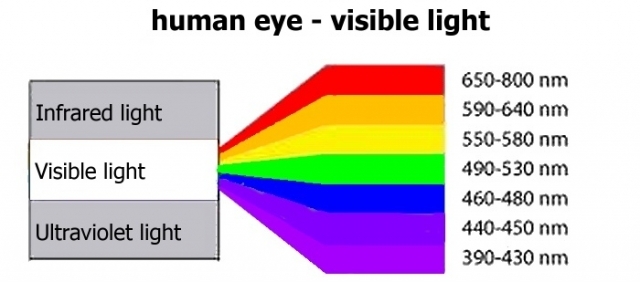 Rods count the highest near the edge of the retina. Towards the middle of the retina rods are complemented with cones. Near the center cones are more frequent and in the middle of the retina only dense cones are present. This spot is referred to as the macula lutea, its center is known as the fovea. Cones are so dense in the spot that they are finer and thinner than in other parts of the retina. With light strong enough foveal vision is active – facilitated mainly by cone cells, we see the middle of our field of view in brightest colors, clearly, sharply and with good sense of detail. Red (long-wave, L-type) cones have peak sensitivity at 560-565 nm, green (medium-wave, M-type) at 535-540 nm, and blue (short-wave, S-type) at 430-440 nm (Hahn, 1995). In bright light the rods have quite low sensitivity, in the dark, however, their ability to detect light increases. All rods contain the same pigment – the protein rhodopsin. After absorbing a certain light quantum, rhodopsin collapses and in time (several minutes) regenerates again. In bright light almost all rhodopsin is dissolved and rod sensitivity is lowered. In case of cone cell pigments, in bright light the brain is ‘flooded’ by signals and interprets the color as white. Therefore, we observe high intensity light sources as white, even though they are not.
Rods count the highest near the edge of the retina. Towards the middle of the retina rods are complemented with cones. Near the center cones are more frequent and in the middle of the retina only dense cones are present. This spot is referred to as the macula lutea, its center is known as the fovea. Cones are so dense in the spot that they are finer and thinner than in other parts of the retina. With light strong enough foveal vision is active – facilitated mainly by cone cells, we see the middle of our field of view in brightest colors, clearly, sharply and with good sense of detail. Red (long-wave, L-type) cones have peak sensitivity at 560-565 nm, green (medium-wave, M-type) at 535-540 nm, and blue (short-wave, S-type) at 430-440 nm (Hahn, 1995). In bright light the rods have quite low sensitivity, in the dark, however, their ability to detect light increases. All rods contain the same pigment – the protein rhodopsin. After absorbing a certain light quantum, rhodopsin collapses and in time (several minutes) regenerates again. In bright light almost all rhodopsin is dissolved and rod sensitivity is lowered. In case of cone cell pigments, in bright light the brain is ‘flooded’ by signals and interprets the color as white. Therefore, we observe high intensity light sources as white, even though they are not.
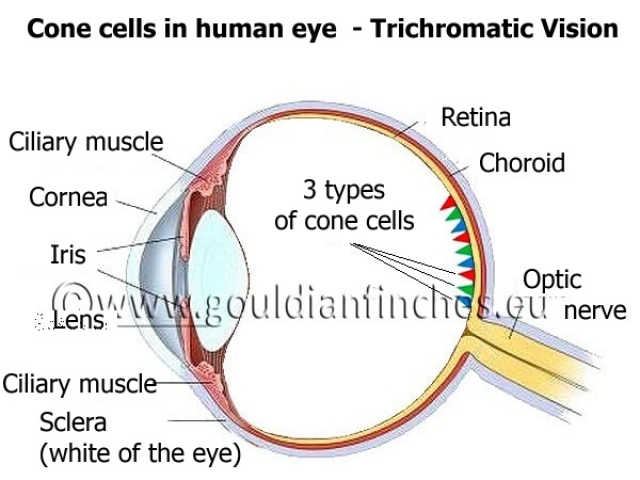 In biochemical terms, this is a simplified version of the effects occurring in the retina: as light strikes the retina it reacts with a retinaldehyde molecule, which immediately changes shape. The change of shape causes rhodopsin, which is molecularly bound to it, to also change shape. This second change makes the rodopsin molecule merge with another protein, transducin. In the process, transducin releases a small molecule and accepts in its place a slightly different one. The transducin molecule then activates a third kind of protein, phosphodiesterase, which produces a messenger to change the state of calcium ion channels. The resulting imbalance of anions and cations inside and outside a cell membrane produces electric voltage, which is transferred by the optic nerve into the brain and transformed into an optical sensation (Behe in Nelson, 1998).
In biochemical terms, this is a simplified version of the effects occurring in the retina: as light strikes the retina it reacts with a retinaldehyde molecule, which immediately changes shape. The change of shape causes rhodopsin, which is molecularly bound to it, to also change shape. This second change makes the rodopsin molecule merge with another protein, transducin. In the process, transducin releases a small molecule and accepts in its place a slightly different one. The transducin molecule then activates a third kind of protein, phosphodiesterase, which produces a messenger to change the state of calcium ion channels. The resulting imbalance of anions and cations inside and outside a cell membrane produces electric voltage, which is transferred by the optic nerve into the brain and transformed into an optical sensation (Behe in Nelson, 1998).
Any disorder in the number or function of the cone sells leads to color blindness, which is hereditary and incurable. Total color blindness is caused by only rods being active in the retina, so the affected only sees shades of gray (which is a rare occasion). A lot more common case is partial color blindness, dichromacy, which is the ability to only perceive two basic colors. Color blindness may also occur, when all three cone cell types are developed, but a flaw is present. This case is referred to as anomalous trichromacy and causes impairment of color vision, the eye has reduced sensitivity to some colors and some are perceived erroneously.
It is interesting that the receptors are also sensitive to ultra-violet radiation. Under normal circumstances the eye’s lens filters this kind of radiation, but people, who had undergone eye surgery and had the lens replaced are able to see objects only lit with UV rays.
How birds perceive color
The vision of birds is different from human vision in three main aspects, which probably present significant distinctions in their perception of colors:
1.Most birds are able to perceive near-UV light of wavelengths shorter than 400 nm (this wavelength is not visible to humans, as absorption occurs. In the ozone layer, UV light is absorbed and very little natural UV light of wavelengths shorter than 300 nm is present. So when comparing the spectral scale of humans [400-700 nm] to birds [normally 320-700 nm], we see that birds are able to perceive a wider spectrum).
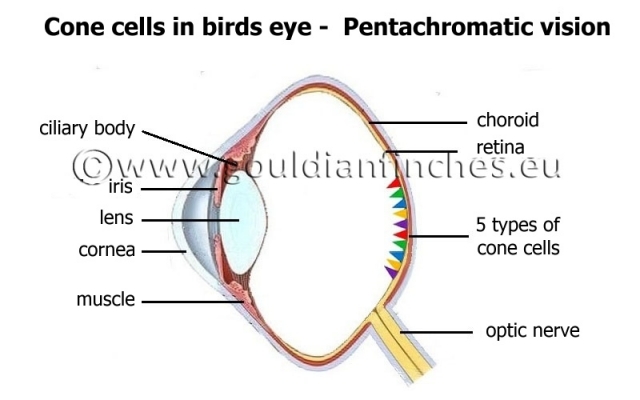 2.Retinas of birds and humans differ in number and types of present cone cells, which facilitate color vision. In humans, three kinds of cone cells exist, containing different pigment types reacting to red, green and blue. In reality, cones dedicated to a certain color dampen the sensation for the other colors. For example red color stimulates red-sensitive cones and at the same time lowers the sensitivity towards green. Similarly, blue signals dampen green and red impulses, as they produce yellow when combined – the negation of blue. On the other hand birds have 6 types of cone cells: 4 kinds of simple cones and two special compound types, which are absent in humans. The function of compound cones remains a mystery; current evidence suggests that they are not used in color vision. The birds’ simple cones are generally the same in all bird species, though some differences exist. Most birds, including the order Passeriformes (perching birds/songbirds) and the budgerigar (melopsittacus undulatus) are able to perceive light of wavelengths about 355-380 nm. However the orders Anseriformes (e.g. waterfowl), Ciconiiformes (e.g. storks), Columbiformes (pigeons) and Galliformes (landfowl) have the UV-sensitive cones replaced by a violet-sensitive cone (lmax of 400-426 nm).The cause of these differences are, for now, unknown, but it is important that both of these cone cells (UV and violet) allow the birds to see the UV portion of radiation. The other three cones in birds are sensitive in the shortwave range (lmax of 430-463 nm), medium range (lmax of 497-510 nm) and longwave range (lmax of 543-571 nm).
2.Retinas of birds and humans differ in number and types of present cone cells, which facilitate color vision. In humans, three kinds of cone cells exist, containing different pigment types reacting to red, green and blue. In reality, cones dedicated to a certain color dampen the sensation for the other colors. For example red color stimulates red-sensitive cones and at the same time lowers the sensitivity towards green. Similarly, blue signals dampen green and red impulses, as they produce yellow when combined – the negation of blue. On the other hand birds have 6 types of cone cells: 4 kinds of simple cones and two special compound types, which are absent in humans. The function of compound cones remains a mystery; current evidence suggests that they are not used in color vision. The birds’ simple cones are generally the same in all bird species, though some differences exist. Most birds, including the order Passeriformes (perching birds/songbirds) and the budgerigar (melopsittacus undulatus) are able to perceive light of wavelengths about 355-380 nm. However the orders Anseriformes (e.g. waterfowl), Ciconiiformes (e.g. storks), Columbiformes (pigeons) and Galliformes (landfowl) have the UV-sensitive cones replaced by a violet-sensitive cone (lmax of 400-426 nm).The cause of these differences are, for now, unknown, but it is important that both of these cone cells (UV and violet) allow the birds to see the UV portion of radiation. The other three cones in birds are sensitive in the shortwave range (lmax of 430-463 nm), medium range (lmax of 497-510 nm) and longwave range (lmax of 543-571 nm).
 3.In birds, each of the four simple types of cones contains a different kind of oil droplets, trough which light has to pass. On every cone these oil droplets – containing carotenoid pigments serve as filters for incoming light. They are a spherical organelle on the distal end of the inner segments of the cone cells and are positioned in such a manner that at all times some portion of light has to pass through them. Several functions have been attributed to these oil droplets, e.g. protection from dangerous UV radiation, photon impact improvement. The most stressed effect at the moment is the effect these droplets have on the spectral sensitivity and color distinction. They function as filters, which absorb short wavelengths. The result is the reduction of overlaps of specific wavelengths on cone cells, which improves the detection of a wide color spectrum and the ability to distinguish colors.
3.In birds, each of the four simple types of cones contains a different kind of oil droplets, trough which light has to pass. On every cone these oil droplets – containing carotenoid pigments serve as filters for incoming light. They are a spherical organelle on the distal end of the inner segments of the cone cells and are positioned in such a manner that at all times some portion of light has to pass through them. Several functions have been attributed to these oil droplets, e.g. protection from dangerous UV radiation, photon impact improvement. The most stressed effect at the moment is the effect these droplets have on the spectral sensitivity and color distinction. They function as filters, which absorb short wavelengths. The result is the reduction of overlaps of specific wavelengths on cone cells, which improves the detection of a wide color spectrum and the ability to distinguish colors.
Birds, therefore, are different from humans not only in their ability to perceive UV radiation, which widens the range of perceived wavelengths, but they have the ability to better distinguish colors, compared to human vision. Birds have higher color resolution ability, which it is impossible to translate into human experience – birds do not see what humans see and vice versa.
11.03.2014 -

this website www.gouldianfinchces.eu
Contact:
















